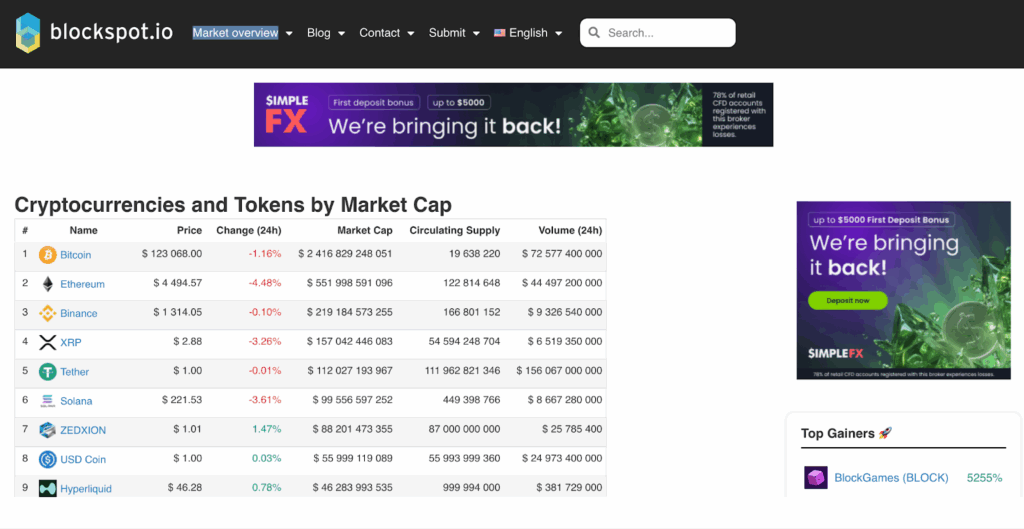Bitcoin has evolved from an obscure whitepaper in 2008 to a global financial and technological phenomenon shaping the future of money. Whether you’re a beginner exploring the basics or a developer building applications on top of the Bitcoin protocol, there’s a wealth of material available to help you learn.
This guide compiles 10 of the most valuable and time-tested resources to understand Bitcoin from every angle: technical, economic, and practical. Each resource listed below has stood out for its depth, accuracy, and impact on the Bitcoin community.
1. Bitcoin Whitepaper (Satoshi Nakamoto, 2008)
Everything began on October 31, 2008, when Satoshi Nakamoto published Bitcoin: A Peer-to-Peer Electronic Cash System. The nine-page white paper proposed a decentralized digital currency that eliminated the need for banks or intermediaries, instead relying on cryptographic proof and a distributed ledger, known as the blockchain.
Satoshi’s whitepaper introduced foundational concepts that remain at the heart of Bitcoin today:
- Proof-of-Work (PoW): Ensuring network security through computational difficulty.
- One-CPU-One-Vote: Guaranteeing fairness by making each node an equal participant.
- Economic Incentives: Rewarding miners through block rewards and transaction fees.
- Pseudonymous Privacy: Achieving anonymity through cryptographic public keys rather than personal identities.
Sixteen years later, the Bitcoin whitepaper continues to be the cornerstone of digital finance and a must-read for anyone who wants to understand how Bitcoin works. You can find it for free on bitcoin.org/bitcoin.pdf.
2. Mastering Bitcoin – Andreas M. Antonopoulos
Published by O’Reilly Media in 2015, Andreas M. Antonopoulos’s “Mastering Bitcoin” remains the definitive book for understanding Bitcoin’s inner workings. Written in clear, accessible language, it covers everything from how wallets function to how miners secure the network.
Why it stands out:
- Bridges the gap between non-technical readers and developers.
- Explains key topics like cryptographic keys, blockchain data, and mining.
- Includes code snippets, diagrams, and practical examples to make technical details understandable.
Antonopoulos treats Bitcoin not just as a payment network but as a new model of human collaboration, an open, permissionless system redefining financial access. The book’s open-source version is available on GitHub and has been translated into multiple languages, making it one of the most widely used educational resources on Bitcoin.
3. Bitcoin.org Developer Guide
The Bitcoin.org Developer Guide is an official, community-maintained resource designed for developers who want to understand Bitcoin’s underlying mechanisms. It offers a step-by-step explanation of Bitcoin’s architecture, from network communication to transaction validation.
Highlights include:
- Transactions & UTXOs: Explains how inputs and outputs form Bitcoin’s transaction model.
- Scripts & Smart Contracts: Introduces P2PKH and P2SH scripts that control spendability.
- Best Practices: Covers key reuse prevention, privacy considerations, and SegWit improvements.
The guide’s detailed examples, including OP codes and stack operations, make it one of the best starting points for programmers who want to interact with Bitcoin at the protocol level.
4. Bitcoin Optech Newsletter
For developers and power users, the Bitcoin Optech Newsletter is a must-follow weekly publication. It distills complex technical discussions, Bitcoin Core updates, and ecosystem improvements into concise summaries.
Each issue tracks:
- Protocol changes: BIP updates, Taproot adoption, and transaction relay policies.
- Fee dynamics: Adjustments to dust limits, RBF (Replace-by-Fee), and mempool behavior.
- Lightning updates: Developments like dual funding, splicing, and channel optimizations.
Optech’s mission is to make Bitcoin development more efficient by reducing the research burden for teams and helping services adapt quickly to policy changes. Developers can browse the archives at bitcoinops.org.
5. Princeton’s “Bitcoin & Cryptocurrency Technologies” Course
The Princeton University course, Bitcoin and Cryptocurrency Technologies, is one of the most reputable academic introductions to Bitcoin. It’s freely available through Coursera and includes a companion textbook of the same name.
The course explains Bitcoin’s structure, consensus mechanisms, mining, and security challenges in detail. It also covers regulatory aspects, privacy issues, and the broader economic implications of cryptocurrencies.
Learners can expect:
- Video lectures and graded assignments.
- Real-world examples connecting theory with practice.
- Access to one of the most academically rigorous crypto courses ever produced.
It’s perfect for those who want a university-level understanding of Bitcoin without formal enrollment.
6. Programming Bitcoin – Jimmy Song
If you want to learn by building, Jimmy Song’s “Programming Bitcoin” is the ultimate hands-on guide. Using Python 3, readers reconstruct Bitcoin’s internal systems step-by-step from key generation to transaction broadcasting.
Key lessons include:
- Building Bitcoin’s math and data structures from scratch.
- Writing and verifying digital signatures.
- Understanding Proof-of-Work and Simplified Payment Verification (SPV).
By the end of the book, readers will have coded their own functional Bitcoin library. This resource bridges the gap between theory and implementation, making it one of the most rewarding ways to truly grasp Bitcoin’s design.
7. Hope.com – Bitcoin Is Hope
Hope.com is a Bitcoin advocacy platform led by Michael Saylor, Executive Chairman of MicroStrategy. The site promotes the idea that “Bitcoin is hope,” a message centered on financial freedom, inclusion, and long-term value preservation for people worldwide. It provides rich educational and media content to help users understand Bitcoin’s role in modern finance.
Key Highlights:
- Education: Features a structured 10-hour learning path, beginner guides, and resources explaining Bitcoin’s technology, energy use, and economics.
- Media Hub: Hosts interviews, podcasts, and presentations, including Saylor’s discussions on Bitcoin as a global monetary network.
Hope.com positions Bitcoin as a secure, incorruptible “bank in cyberspace,” advocating its adoption as sound, digital money for all.
8. Mempool.space – Visualizing Bitcoin in Real Time
For those who prefer to see how Bitcoin works, Mempool.space offers an interactive view of the Bitcoin network. It displays live data on unconfirmed transactions, blocks, and fees, giving users a real-time understanding of blockchain activity.
Key features include:
- Mempool Explorer: Tracks pending transactions and projected confirmation times.
- Fee estimation: Suggests optimal fees for fast or economical confirmations.
- Lightning Network dashboard: Shows real-time capacity, channels, and node activity.
Whether you’re a developer, miner, or enthusiast, Mempool.space helps you visualize network congestion, analyze fee markets, and better plan transactions.

9. Blockspot.io – Comprehensive Bitcoin & Crypto Learning Resource
Blockspot.io is a global blockchain data and education platform that provides insights into Bitcoin, cryptocurrencies, and the wider digital asset ecosystem. It lists over 50,000 coins, 1,700 exchanges, and detailed project data, serving as both an analytics hub and an educational resource for beginners and analysts alike.
Key Highlights:
- Learning Hub: Offers tutorials, trading guides, and technical analysis articles focused on Bitcoin and blockchain fundamentals.
- Data & Insights: Features verified listings, market data, and project overviews, helping users connect theory with real-time metrics.
Blockspot.io bridges education, transparency, and research in one platform.

10. X (formerly Twitter) – Real-Time Bitcoin Research & Community Insight
Twitter (now X) is the most active hub for real-time Bitcoin updates, debates, and technical discussions. It’s where Bitcoin Core developers, economists, and enthusiasts exchange ideas, announce releases, and share insights before they reach mainstream media.
Here’s why X is essential:
- Instant news: Protocol upgrades, forks, and incidents are shared first-hand.
- Educational threads: Developers and analysts explain concepts like mempools, privacy, or cryptography in an accessible language.
- Community interaction: Users can question, debate, and learn directly from top contributors.
Recommended accounts to follow:
- @lopp (Jameson Lopp): Bitcoin engineer and Casa co-founder, sharing advanced insights on security and infrastructure.
- @adam3us (Adam Back): Blockstream CEO and early Bitcoin contributor, posting about development, scaling, and cryptography.
- @Ashcryptoreal (Ash Crypto): Renowned crypto analyst providing market insights, Bitcoin trends, and educational breakdowns in an easy-to-digest style.
Following these accounts will turn your X feed into a real-time learning stream for Bitcoin research and development.
Learning Bitcoin is a Lifelong Journey
Bitcoin isn’t just a currency; it’s a fusion of computer science, economics, cryptography, and game theory. Learning it deeply takes time and curiosity, but with the right resources, anyone can gain mastery over its concepts and applications.
Start with the Bitcoin Whitepaper to understand the principles, then move to Mastering Bitcoin for structure, and explore Programming Bitcoin or the Developer Guide to dive deeper. As your understanding grows, use Mempool. space and Blockspot.io to visualize data, and stay informed through X.
Each of these resources represents a pillar of Bitcoin education, from foundational knowledge to real-world data and community insight. Together, they form a complete learning pathway for anyone eager to understand and build within the world’s most decentralized and revolutionary financial network.


